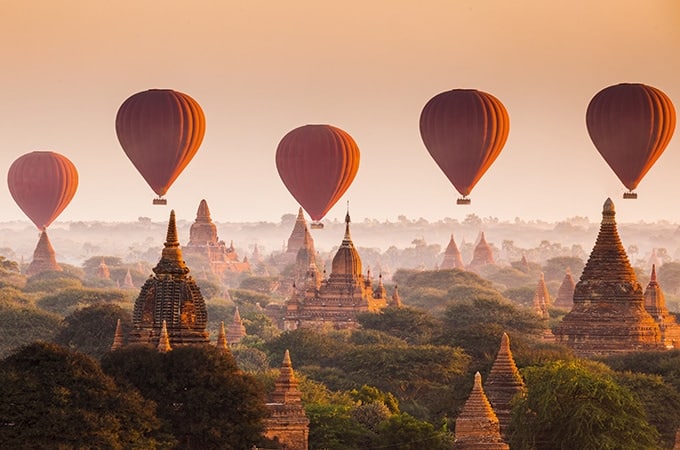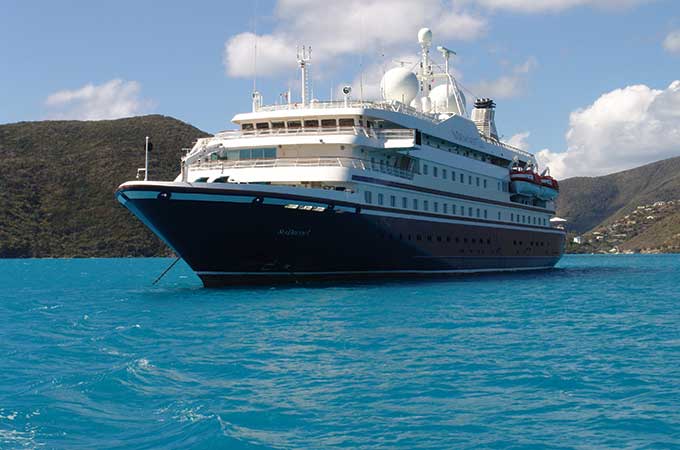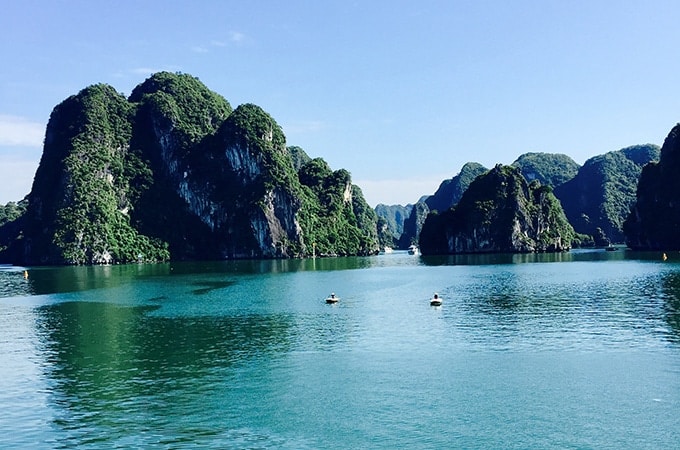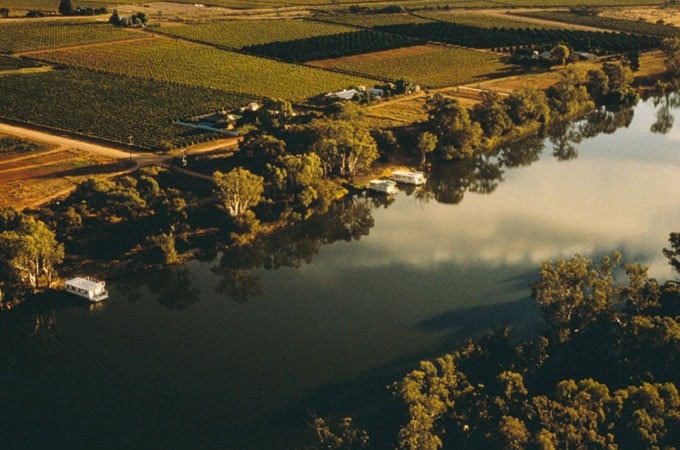According to the people who know lots about these sorts of things, when Rudyard Kipling famously wrote about ‘the road to Mandalay’ he was actually referring to the Irrawaddy.
This mighty river in Myanmar (formerly Burma) rises among glaciers in the Himalayas and flows for 2,100km into the Andaman Sea. Its non-Anglicised name, Ayerawaddy Myit, can be translated as ‘river that brings blessings to the people’. It’s certainly a blessing for me, as I’m here to experience the romance of this timeless stretch of water on the luxury, custom- built Sanctuary Ananda, on a five-day cruise that will take us from Mandalay to Bagan, the ancient temple site that’s home to a thousand spires.
Related article: On-trend travel: Magical Myanmar
We check in to our floating home – and then immediately disembark to hit the streets of Mandalay. It may not be in-your-face pretty, but it’s a photographer’s dream, with something to catch the eye at every turn: women riding sidesaddle on motorbikes, brightly coloured open-air buses crammed with locals going who-knows-where, and shaved-headed monks and nuns collecting alms, wearing saffron-red and delicate pink robes respectively.
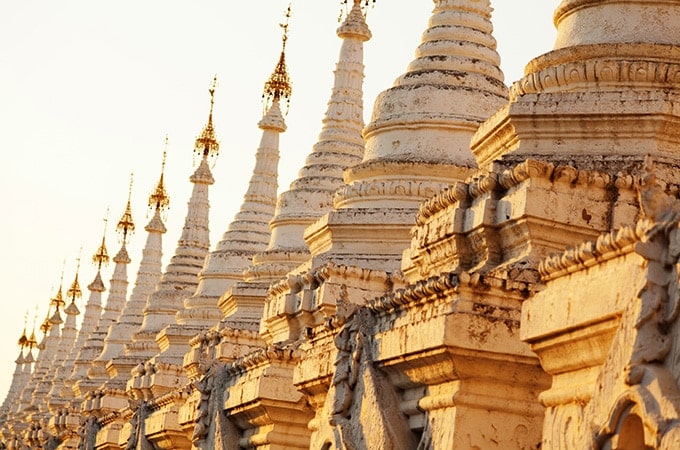
Mandatory in Mandalay for first-time visitors is Kuthodaw Pagoda, aka the ‘the world’s largest book’. Here, surrounding a central golden stupa (a dome-shaped shrine), are 730 white ‘caves’ laid out in beautifully serried, Instagrammable rows. Each one contains a single stone tablet inscribed with Buddhist teachings. The world’s largest book, indeed: we’re told that if you laid the slabs on top of each other, they’d reach a height of 20 storeys. And if you did nothing but read for eight hours a day, it would take you 15 months to get through them all (after you learned the ancient Pali language, of course).
Farewelling Mandalay we finally set sail (is that the right term for a boat with no sails?) and spend some time exploring our luxe new digs. Hosting no more than 45 guests, there are 21 cabins spread out over three decks on Sanctuary Ananda. My luxury suite on the top deck is so spacious you’d forget you were on a boat if it wasn’t for the ever-changing scenery outside. There’s a bar (with resident mixologist), an expansive deck with plunge pool, a day spa (don’t leave without having a Burmese massage), great restaurant and even a library. Contemporary yet with a nod to local heritage and colour, it’s all super-chic and very, very comfortable.
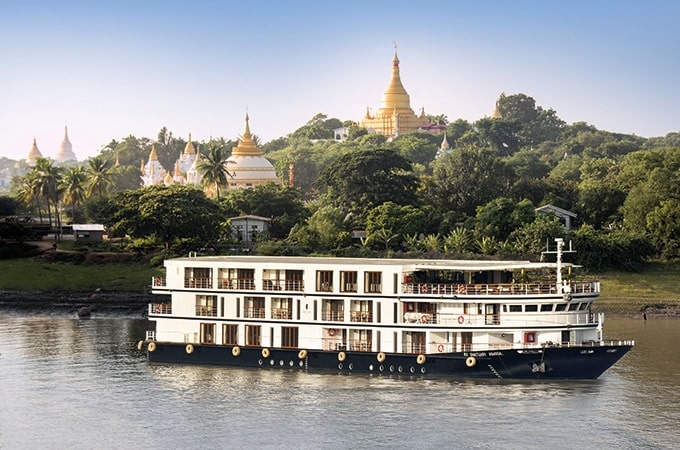
By late afternoon we’re back on dry land again, gazing out from the terrace of Soon U Ponya Shin Pagoda to the temple-studded emerald hills of Sagaing. Afterwards, a visit to a local orphanage and monastic school is moving, sobering and uplifting, all at the same time.
As the sun begins to go down we make our way to the famous U Bein Bridge. One of Myanmar’s most photographed sights, it’s believed to be the oldest and longest teak bridge in the world, stretching 1.2km across Taungthaman Lake. It may be old and rickety, but locals and tourists still stream across it every day. It’s best viewed at dusk, when the orange glow of sunset provides a glorious backdrop for the bridge’s distinctive silhouette. It makes for a brilliant view, especially if you’re in one of the colourful little boats – operated by equally colourful locals – that ply these waters. As you drift past fellow cruisers and other boat-going tourists, exchanging pleasantries as you go, it’s like an old-fashioned promenade. Only on a lake. Then, just as you’re thinking ‘The only thing that could make this better is a drink,’ another boat magically appears and a glass of Champagne is placed in your hand, courtesy of Sanctuary Ananda. This is how you do a sunset.
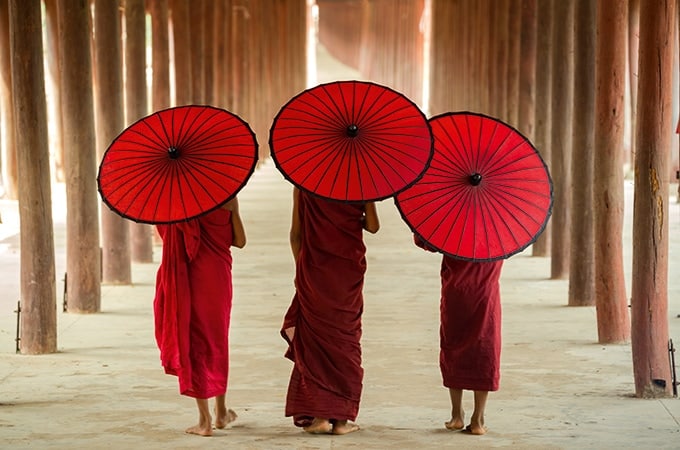
The next day we sail to Sin Kyun, a quaint, remote village sponsored by Sanctuary Retreats Philanthropy, where farming and hat-making sustain some 1,000 inhabitants. It’s a fascinating insight into rural life in Myanmar, but on this particular day all farm work has ceased in preparation for an extraordinary event: Shinbyu. It’s customary for every boy in Myanmar to enter a monastery as a Buddhist novice for at least one week, and the initiation day that precedes this is one of the most important in their lives. Boys as young as five can become a novice, but most go home again and re-enter when they’re a bit older, at which time some will stay on permanently to become ordained monks at the age of 19. As total outsiders we’re surprised and deeply honoured to be invited to attend the initiation ceremony. We watch as older monks deftly shave the heads of the young novices-to-be, before a sacred ceremony during which the boys change from their everyday clothes into miniature versions of the red robes worn by every monk. As they receive blessings we realise how privileged we are to have witnessed something so very special.
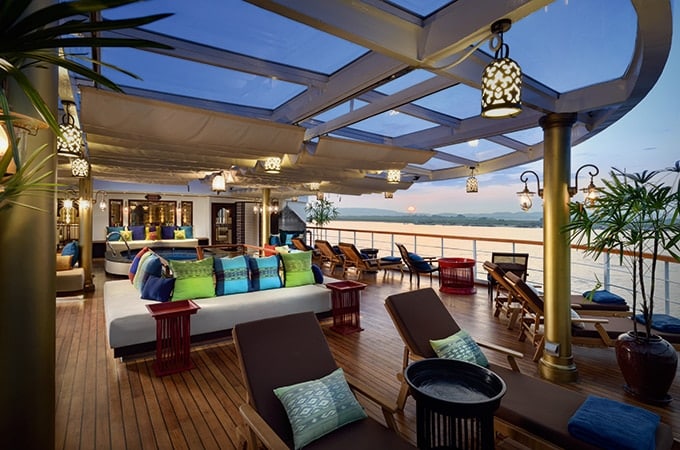
Later, after exploring the farm, we head back to the boat where a fresh juice and shoe-cleaning service awaits. Yep, you heard right. Every time we board the ship a drink is proffered and our shoes are whisked away (replaced with locally made flip flops), returned to our cabins once the dust of the day has been removed. It’s this level of service that elevates the cruise to seriously special levels. There’s a meaningful gift waiting on our bed every night, and as well as incredible sightseeing and activities, the itinerary includes demonstrations: traditional Burmese dancing, how to wear a longyi (the super-comfortable local version of a sarong) and even a cooking demo. It comes courtesy of executive chef Sumet Sumpachanyanont, who was at the five-star Mandarin Oriental Bangkok for 24 years before he took to the waters in Myanmar. His pedigree and experience are evident in every delicious bite at mealtimes.
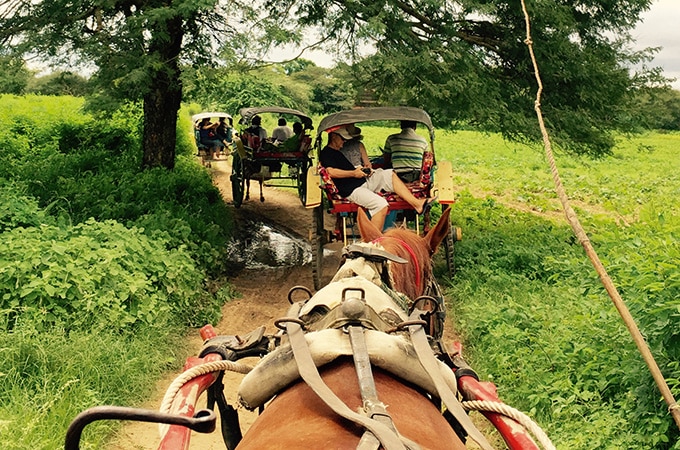
En route to Bagan on day three we visit a local market in the traditional country town of Pakokku, famed for its thanakha. This local version of sunscreen is made from the bark of the Thanakha tree. It forms a yellow paste that you’ll see smeared on the cheeks of almost every woman you meet, often applied in pretty, leaf-shaped patterns. Their skin is so beautiful and unlined, I’m convinced I’ve found the fountain of youth. I invest in some thanakha wood and a special stone on which to grind the bark, but am foiled by Customs when I declare it on my return to Australia. Back to Factor 50 for me.
From Pakokku, Bagan is a leisurely two-hour cruise down the river or an hour by road. This is one of the world’s greatest archeological spots, a temple site to rival Angkor Wat or Machu Picchu. We’re talking real bucket-list stuff. The setting is sublime: 67 square kilometres of verdant lands from which rise literally thousands of temples. Built by the kings of Bagan between 1057 and 1287, they’re testament to the Buddhist belief that to build a temple is to earn merit.
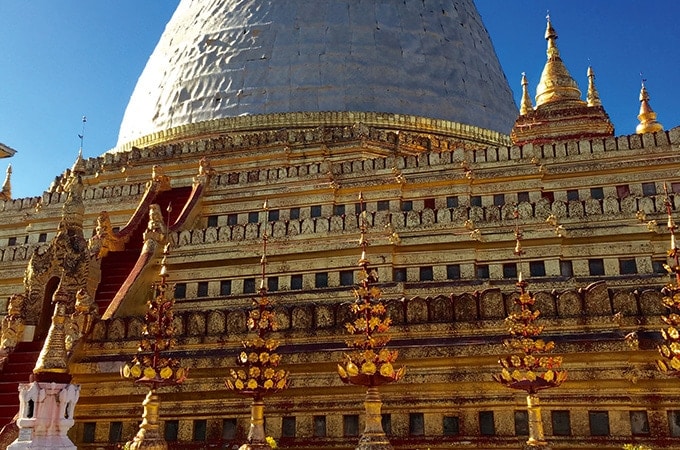
Like so many other structures in Bagan, the dome of the golden Shwezigon Pagoda – one of the most significant religious buildings in Myanmar – is covered in burlap when we arrive, the legacy of a recent earthquake and subsequent restoration work. But you barely notice it, there’s so much other gold on display. It might not be as seriously blingy as the similar-sounding Shwedagon Pagoda in Yangon (which is encrusted with more than 4,500 diamonds, including one that weighs in at an Elizabeth Taylor-worthy 72 carats), but it’s nonetheless very sparkly indeed.
For more gold we head to the imposing Shwesandaw Pagoda, which is gilded when touched by the rays of the setting sun. There are five terraces from which you can watch the sun set at this 100 metre-tall pagoda. But be prepared to get there early to nab a spot – and for your legs to hurt. Temple fatigue is a possibility in Myanmar, but at Shwesandaw it’s a very literal thing, thanks to the steepest, deepest steps I’ve ever encountered. #TotallyWorthIt.
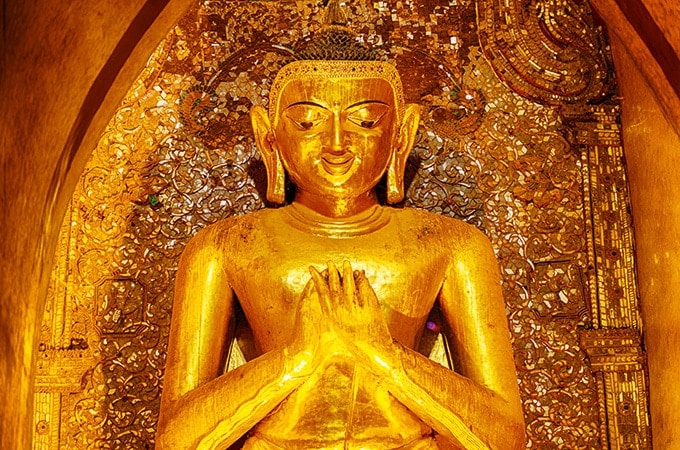
Day four starts with a visit to Ananda Temple, regarded as the finest in Bagan. It’s beautifully proportioned and houses four enormous standing Buddhas – one of whom can look sad or cheery, depending on where you stand. Afterwards, we take a super-scenic horse-drawn carriage ride through the unique, temple-strewn countryside, ending at Damayangyi Temple, the biggest structure in Bagan.
Lunch is at Popa Mountain Resort, about 90 minutes’ drive away. The setting is lovely and the lunch tasty, but you could eat sawdust here and not really notice – it’s all about the view. There’s a vast plain and an extinct volcano, Mount Popa (‘Flower Mountain’), but star of the show is Taung Kalat (‘Pedestal Hill’), a huge, sheer-sided rocky outcrop that rises 657m above sea level. On top of it sits the sacred Popa Taung Kalat monastery, known as the home of the Nats (Burmese spirits which have been worshipped here for more than a thousand years). You can climb to the top via 777 steps, or just gaze in wonder from afar while you eat lunch at the resort. It’s dramatic, other wordly and spectacular. I have yet to find a photograph that does it justice.
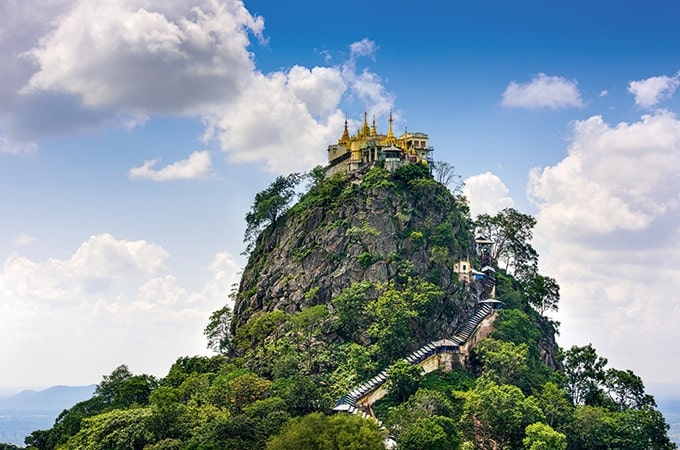
But when it comes to views in this part of the world, the real money shot is back in Bagan. To truly grasp the scale of this medieval capital, there’s only one way to go: up. This is one of the places in the world to go hot-air ballooning, and every morning during the season (early October to the end of March) the sky is filled with colourful balloons from which wide-eyed tourists look down on the wondrous sight of 2,000 temples, monasteries and pagodas rising up from the temple plain.
After a memorable last supper, a few of us are up super-early on our final morning, ready to take to the skies. We’re collected before dawn in a vintage teak coach and driven to the site with other excited visitors from all over the globe. It’s the perfect ending to a trip that’s given us an extraordinary insight into a traditional and deeply spiritual land that only started opening up to the outside world a few years ago. This final experience is, quite simply, unforgettable. Or at least that’s what they tell me. Unfavourable wind conditions caused our balloon to be grounded and our dreams to be dashed. Never mind, there’s always next time. This was a once-in-a- lifetime trip, but I think I’ll do it twice.
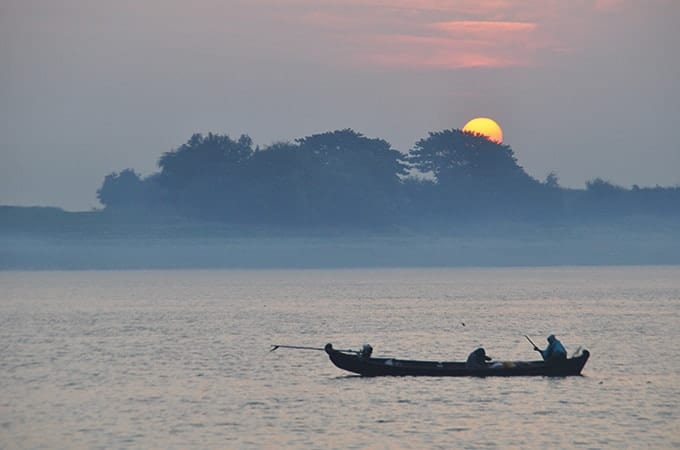
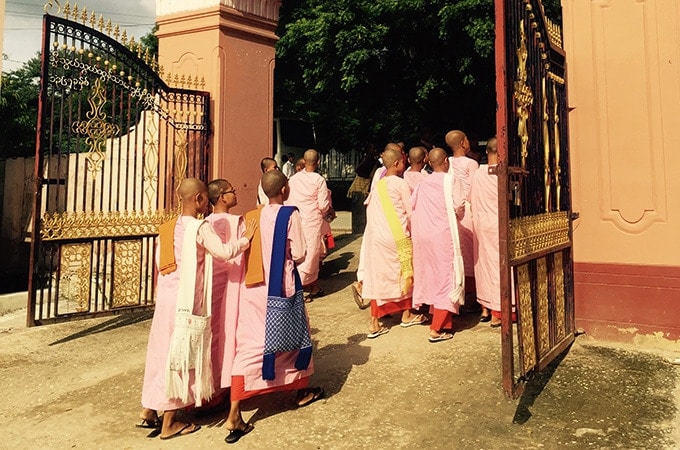
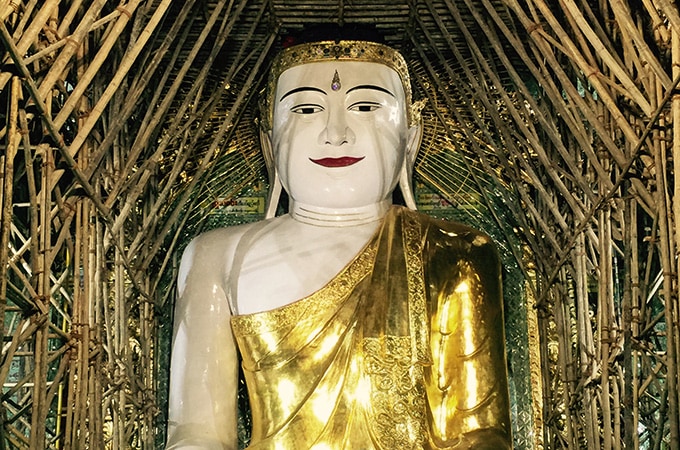
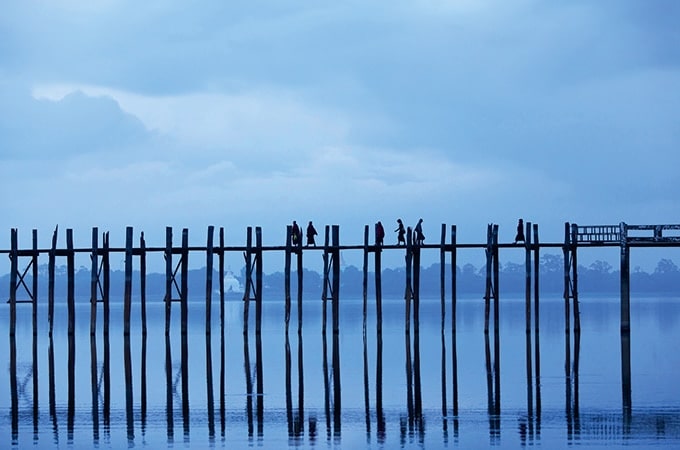
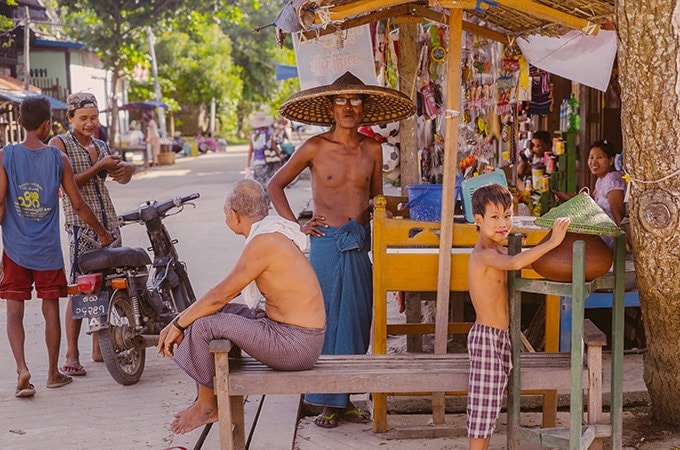
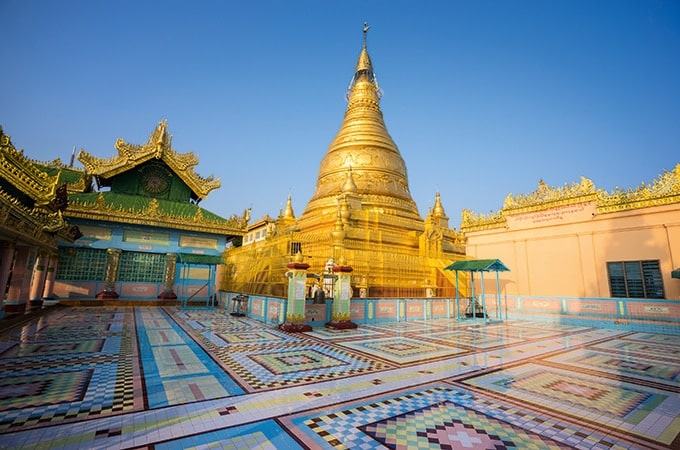
The writer travelled as a guest of Sanctuary Retreats. Related article: The Road to Mandalay: Be enchanted by Myanmar
